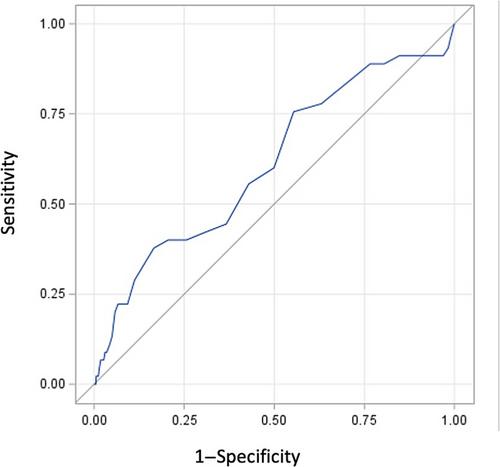Cervical length measurement using transvaginal sonography at 18+0–24+0 weeks of gestation is used to identify women at risk of preterm delivery, who may benefit from treatment with progesterone to prevent premature birth. Few and conflicting data exist regarding the predictive value of cervical length measurement performed at later gestational ages. The primary objective of this study was to evaluate the predictive accuracy for spontaneous preterm birth of a single cervical length measurement performed between 24 and 32 weeks of gestation in asymptomatic singleton pregnancies at low risk for spontaneous preterm birth. The secondary objective was to test the predictive accuracy of different cervical length thresholds in the same population.
This was a historical cohort study conducted in a tertiary referral hospital. A total of 2728 asymptomatic women with singleton pregnancy at low risk for spontaneous preterm birth were recruited. Of these women, 1548 had cervical length measured at 24+0–27+6 weeks of gestation and 2191 women at 28+0–32+0 weeks. In all, 1010 women were present in both gestational age windows. Maternal demographics, medical and obstetrical history, and pregnancy outcome were reviewed. The predictive value of cervical length for spontaneous preterm birth was evaluated through logistic regression analysis. Results were adjusted for confounding factors.
Overall, spontaneous preterm birth occurred in 53/2728 women (1.9%). In both the 24+0–27+6 and 28+0–32+0 weeks groups, a shorter cervical length was significantly associated with spontaneous preterm birth (p < 0.01), but it had a low predictive value, as shown by the receiver operating characteristics curve analysis (areas under the curve 0.62, 95% CI 0.50–0.74 for the 24+0–27+6 weeks group, and 0.61, 95% CI 0.52–0.70 in the 28+0–32+0 weeks group). When the predictive accuracy for preterm delivery of different cervical length cut-offs was evaluated, the sensitivity and positive predictive value were low in both gestational age windows, irrespective of the threshold used.
In asymptomatic women with singleton pregnancy at low risk for spontaneous preterm birth, the predictive value of cervical length after 24+0 weeks of gestation is low. Therefore, cervical length screening in these women should be discouraged.


